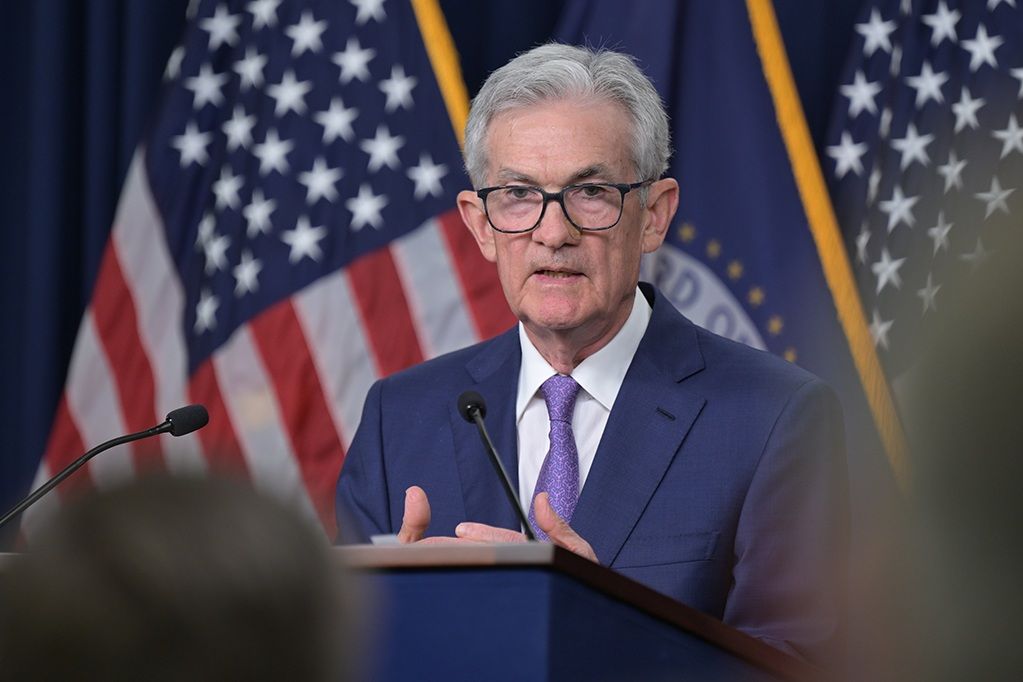Fed at a Crossroads: Powell Faces the Spotlight at Jackson Hole in a Moment of Fed Uncertainty

TradingKey - The annual Jackson Hole Symposium is currently underway, with Federal Reserve Chair Jerome Powell’s speech on Friday, August 22, drawing global attention. Amid growing internal divisions within the Fed and external pressure from the Trump administration to reshape its leadership, will the Fed’s September rate cut materialize as markets expect?
This year’s symposium is themed “Labor Markets in Transition: Demographics, Productivity, and Macroeconomic Policy.” Some observers say this signals a shift in the Fed’s focus — from post-pandemic inflation control to labor market dynamics.
This shift in emphasis has become more urgent following the release of the July nonfarm payrolls report. In recent weeks, Fed Governors Michelle Bowman and Christopher Waller have both emphasized labor market risks, though their comments may carry political overtones.
Looking ahead to Powell’s speech, key topics are expected to include a review of the Fed’s policy framework and signals about a September rate cut — particularly how the Fed balances employment and inflation, the latter being of greatest interest to financial markets.
Powell’s term as Fed Chair ends in May 2026, meaning this will likely be his final Jackson Hole appearance as chair. He is expected to use this “last opportunity” to clarify the Fed’s policy stance and defend the central bank’s independence, which has come under repeated threat.
Fed Policy Framework Review: Strengthening the Priority of Price Stability
According to the official agenda, Powell’s speech is titled “Economic Outlook and Framework Review,” focusing on the Fed’s five-year policy framework review. Unlike most central banks that focus solely on inflation, the Fed has a dual mandate of price stability and maximum employment.
Under the 2020 policy framework, the Fed adopted flexible average inflation targeting, allowing inflation to moderately exceed 2% for some time after prolonged periods below target — a policy of temporary “overshooting.” On employment, the Fed emphasized “broad and inclusive” maximum employment, committing not to raise rates preemptively due to low unemployment or inflation concerns.
This framework worked well in the years before the pandemic, as the Fed’s tolerance for modest inflation supported strong job growth. However, the post-pandemic surge in inflation, full employment, and macroeconomic uncertainty rendered the framework less effective. Many economists now urge a reassessment.
Deutsche Bank noted that while the 2020 framework was not the primary cause of delayed rate hikes and inflation overshoot, it contributed to the outcome.
In May, Powell acknowledged that the economic environment has changed significantly since 2020 and that the Fed would evaluate its review mechanisms.
Goldman Sachs expects the Fed to revert to a symmetric employment gap approach — focusing on both under- and over-employment — and to shift from “average inflation targeting” to “flexible inflation targeting.”
This would mean:
Less emphasis on prolonged gaps in employment
Greater focus on inflation stability, anchoring the 2% target without pursuing compensatory overshoots
A clear priority of price stability over maximum employment, adapting to the new economic landscape
Any Signals on Rate Cuts?
Historically, the Jackson Hole symposium has served as a precursor to major policy shifts. For example:
Former Chair Ben Bernanke signaled QE2 in 2010 and QE3 in 2012
Rate hike signals were delivered in 2015 and 2016
Powell introduced average inflation targeting in 2020, maintained dovishness in 2021, signaled aggressive tightening in 2022, indicated the end of hikes in 2023, and hinted at rate cuts in 2024
As tariff impacts increasingly permeate the U.S. economy, Fed officials have become deeply divided on balancing inflation and employment.
At the July FOMC meeting, Waller and Bowman dissented, arguing the Fed should cut rates soon to prevent further labor market deterioration — a view reinforced by the weak July jobs report.
However, the July meeting minutes show most officials still believe upside inflation risks outweigh downside employment risks. The consensus is that the full impact of tariff hikes will take time to appear in consumer and service prices.
At his July press conference, Powell said he had not seen signs of labor market weakening, and that the pass-through of tariffs to prices was slower than expected, with inflation impacts expected to show up in future reports.
Just before Powell’s speech, several Fed officials delivered hawkish remarks:
Beth Hammack, 2026 FOMC voter and Cleveland Fed President, said current data does not justify a September cut, and inflation remains a top concern
Jeff Schmid, 2025 voter and Kansas City Fed President, said monetary policy is in a good place, and rate changes require very clear data, with much work still needed to achieve inflation goals
Raphael Bostic, Atlanta Fed President, expects only one rate cut this year
Given this complex backdrop, many expect Powell will not clearly signal a rate cut.Joe Brusuelas, economist at RSM, said:
“I wouldn't hold my breath waiting for Jay Powell to tip his hand on whether the Fed is going to cut rates. This is far closer to a coin flip than what's being commonly acknowledged.”
Rate Cuts and Market Impact
David Mericle, economist at Goldman Sachs, expects Powell won’t definitively signal a September cut, but may indicate his support for easing.
Fed rate cut expectations have been a major driver of the record-breaking U.S. stock rally in 2025. Analysts warn that if Powell fails to deliver a market-friendly signal, the equity rally could stall.
Ritholtz Wealth Management analysts expect Powell to weigh the current environment, but say the July inflation and jobs data may still be insufficient to confirm a September cut.
Defending Fed Independence
Beyond President Trump’s repeated attacks on Powell — calling him “Mr. Late” — the administration is actively trying to install “loyalists” on the Fed Board. After nominating Stephen Miran to fill the vacancy left by Adriana Kugler, Trump is now pushing for Lisa Cook’s resignation over allegations of mortgage fraud.
Claudia Sahm, former Fed economist, said this is a new tactic by the administration to control the Fed, using every available means to achieve that goal.
If Cook leaves, Trump could appoint four of the seven Fed governors — including two from his first term — giving him a majority on the Board.
The attempt to expand White House influence over the independent Fed has sparked deep concerns. If monetary policy becomes subject to political goals, it could lead to short-termism and global financial instability.
Powell said last month:
“I think that having an independent central bank has been an institutional arrangement that has served the public well. And as long as it serves the public well, it should continue and be respected.”
* The content presented above, whether from a third party or not, is considered as general advice only. This article should not be construed as containing investment advice, investment recommendations, an offer of or solicitation for any transactions in financial instruments.


